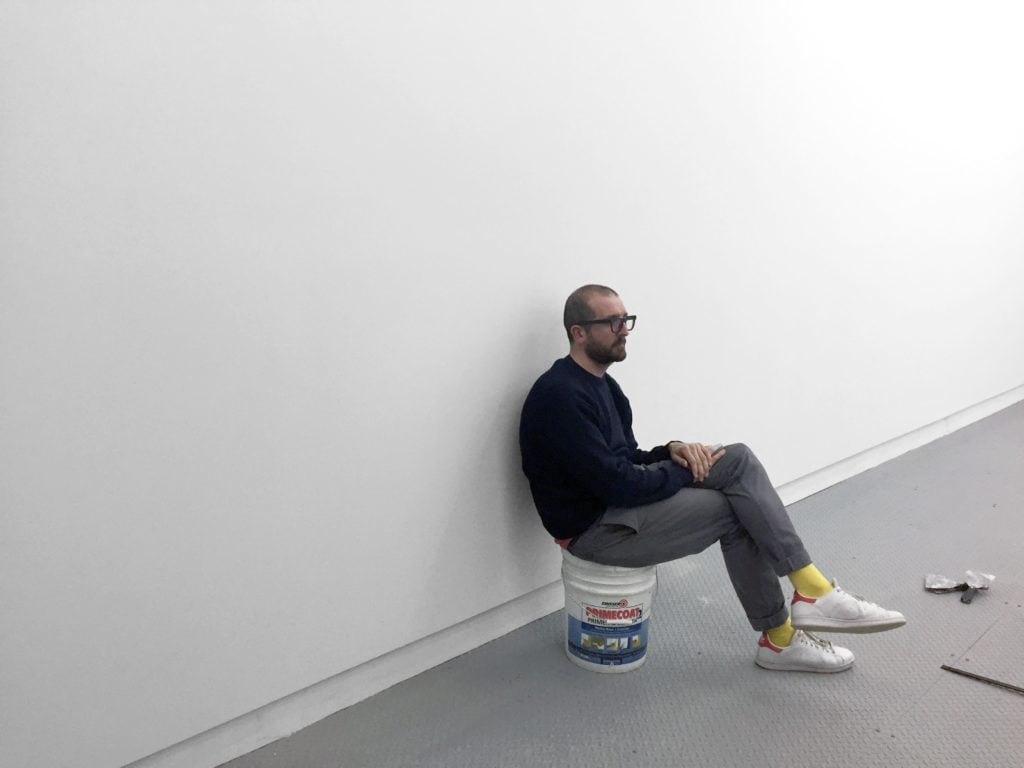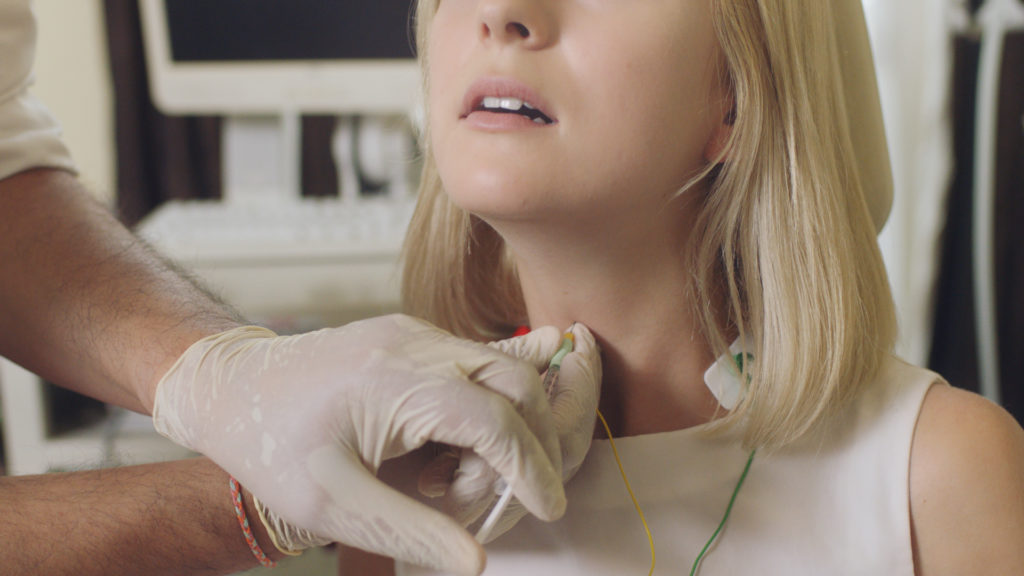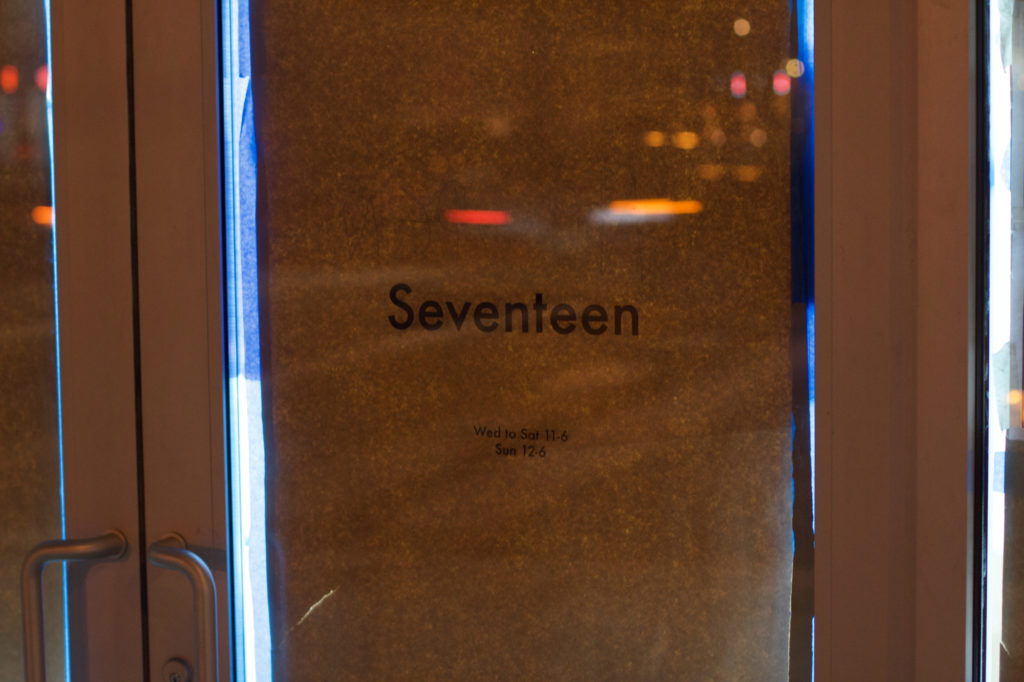Art World
Dave Hoyland of Seventeen Gallery Is Coming to America
This weekend, he inaugurates the New York branch of his highly respected London outfit.

This weekend, he inaugurates the New York branch of his highly respected London outfit.

Christian Viveros-Fauné

Hold onto your wearables. Dave Hoyland, a debonair mid-market dealer from London, is coming to the Lower East Side.
This Sunday, November 20, he inaugurates the New York branch of his highly respected London outfit, Seventeen Gallery, on the ground floor of a former furniture wholesaler at 214 Bowery. On first inspection, it’s evident Hoyland has nabbed real estate gold—among his new neighbors are the International Center of Photography and the New Museum.
An influential dealer since first opening in Shoreditch in 2005, Hoyland has built a reputation for showing artists before they blow up, a sought after skill in today’s art market. Among the notable creators Seventeen has worked with are post-internet artists Jon Rafman, Oliver Laric, and Hannah Perry. When asked how he finds new talent, Hoyland once told the British magazine Amuse: “I meet them in the pub. Finding artists is easy, finding people you like is harder.” He won’t say where he met London-based video artist Marianna Simnett, but her exhibition “Lies” is the artist’s first US outing.
In the spirit of a mutual getting to know you exercise, artnet News has chosen Hoyland to conduct its first art dealer “entry” interview (God knows there have been plenty of opportunities for “exit” interviews lately). A modified corporate exercise engineered to identify problems and missed communications, the entry interview is designed to explore a subject’s interests, values, preferences, knowledge, skills and career aspirations through a set of in-depth questions.
Hoyland proved to be the perfect interviewee throughout our Q&A. Just don’t ask him to tell you what date Thanksgiving falls on.

Still from: Marianna Simnett, The Needle and the Larynx, 2016.
How did you start out in the art dealing business?
I was once a mediocre artist making mediocre video and performance. So I went to work for a commercial gallery in London to find out what a gallery was, and how it operated in relation to my own and my friend’s practices. In time, this led to an idea about opening a project space. I went to work for a variety of different types of galleries to examine different approaches. I worked at a mid-career painting gallery, a secondary market dealer, a print publisher, and so on.
What confluence of events led you to decide to open a gallery in New York as opposed to, say, Berlin or Los Angeles?
I’ve got friends in New York and I could always imagine living here. This is not a sentiment I’ve had about many other cities associated with the international arts community. There’s obviously also a sizable audience here that’s engaged and curious and vocal about contemporary art. That’s enormously appealing to me.
I’m interested in facilitating artists’ projects and exhibiting specifically for a New York audience, as there’s such a history of engagement with contemporary art here. Britain only really started paying attention to contemporary artists in the ’90s, whereas my perception is that the US has been supporting and examining contemporary work for a lot longer.
How well do you know the Lower East Side, the community that you’re now located in?
I’ve yet to discover the equivalent of St. John [Editor’s note: St. John is an English restaurant located in Smithfield, London, and widely reputed to be that city’s best].
Are you familiar with the word “chutzpah” and the enormous quantities of it one needs to open an art gallery in New York?
No, but I am very familiar with naivety and optimism and luck.
I know that the business is supposed to be global these days, but what do you expect to be the biggest differences between doing business in New York and London? How has living and working in London prepared you for having a gallery in the Lower East Side?
I’ve been surprised by how local each community is, globally speaking: there are many artists that don’t have presence in London but who are ubiquitous in New York, and the reverse is also true.
Additionally, I’m quite interested in how the everyday interactions between people differ from London. Our notion is that New York is aggressive and brash, but the small gestures here are meaningful. People actually talk to strangers, which makes interactions easier. Try talking to a stranger in an elevator in London, for example.

Door of under construction Seventeen Gallery, New York. Courtesy of Seventeen Gallery.
Was Brexit a factor in your opening a gallery here? Seeing as Brexit was followed by Donald Trump’s shocking presidential election victory, wouldn’t your opening a new gallery in Manhattan fall into the category of “from the frying pan into the fire”?
I’m still very angry about Brexit, and it was very distressing to see the parallels with the election here. If there are any positives to come out of these events, one might be that we should all now have a greater awareness of the online echo chamber. If this is a period of post-truth politics, this awareness is important if we want to hold elected officials accountable for the legislation they enact.
You once told a reporter that you meet all your artists in “the pub.” Since we don’t have pubs in New York, do you most reasonably expect to meet them at a) Bowery Whole Foods, b) East Sixth Street Pilates or c) Smorgasburg in Williamsburg? If you require a fourth option, please specify.
The point I was attempting to make was that just about everyone that you and I know are artists. I have trouble meeting dentists.
Why did you decide to open your new space on the Bowery as opposed to, say, Chelsea? Was it because there is a restaurant called “Lower East Side Deli” in Shoreditch?
The galleries that I go to in New York are based in LES, so it seemed natural.
If I were to ask one of your professors, artists or collectors to describe you and your gallery what would he or she say?
He or she would say “Who?”
Have you taken on or are you planning on taking on new artists? Are they more likely to have studios in Camden or Bushwick?
Inevitably, I’m going to get excited about new artists I meet here, yes.
Where do you come down in the battle for zombie apocalypse cable series: “iZombie” or “The Walking Dead”?
I prefer “Game of Thrones.” It ‘s a remarkably accurate and insightful documentary about the British class system.
In the event the new Donald Trump presidency triggers an economic or nuclear war against Russia, Iran, and North Korea, and Britain is slavishly dragged into the fray, are you willing to relocate?
I’ll retire upstate.
Is it true that you originally planned to open your inaugural American exhibition on November 24?
The Thursday before [Art Basel in Miami Beach] seemed like such a good time—not much going on, no particular clashes. It was months into the renovations before Marianna Simnett, the artist inaugurating the space, pointed out that there was some sort of public holiday in America at that time. Rookie British gallerist…